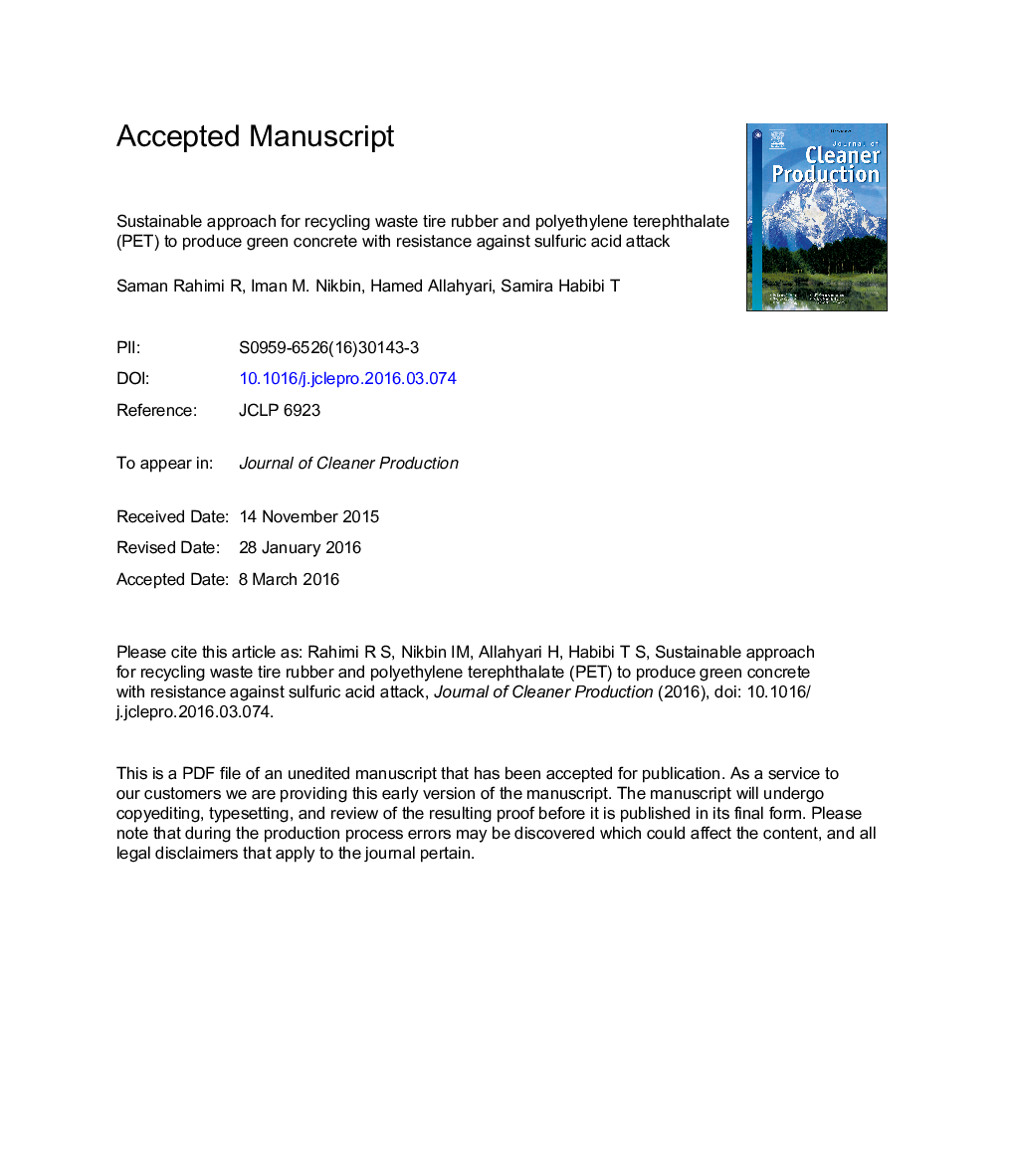| Article ID | Journal | Published Year | Pages | File Type |
|---|---|---|---|---|
| 8102078 | Journal of Cleaner Production | 2016 | 57 Pages |
Abstract
This work presents a study on the potential use of waste crumb tire rubber and polyethylene terephthalate (PET) particles to produce sustainable concrete. In order to find out the feasibility of such concrete in acidic environment, broad laboratory investigations in terms of crushing load, mass, and ultrasonic wave velocity of tire rubberized concrete (TRC) and tire rubberized PET concrete (TRPC) were conducted and assessed by Taguchi method. Afterwards, the results were compared with normal concrete (NC) and normal PET concrete (NPC). 5, 10, and 15 percent of PET particles along with 15 percent of crumb tire rubber substituted for fine natural aggregate with the aim of reducing the consumption of virgin natural resources and disposing of wastes in a safe, effective, and environmentally friendly approach. The significance levels of the experimental parameters, which indicate how the factors affect the crushing load, mass, and ultrasonic wave velocity, were determined by using Analysis of variance (ANOVA) method. The statistical and analytical results showed that using PET in both NPC and TRPC caused the resistance against sulfuric acid to increase after a 60-day sulfuric acid exposure. Although TRC in comparison to NC had a lower resistance against sulfuric acid, substituting 15 percent of PET particles caused the resistance of TRPC against sulfuric acid to increase significantly and reached that of NPC containing 10 percent of PET. The conclusion is that the waste crumb tire rubber can be employed in concrete in case of using PET particles to compensate for the downside of TRC in acidic environments and, in so doing, a large amount of waste material can be disposed of in a sustainable way.
Related Topics
Physical Sciences and Engineering
Energy
Renewable Energy, Sustainability and the Environment
Authors
Saman Rahimi R., Iman M. Nikbin, Hamed Allahyari, Samira Habibi T.,
